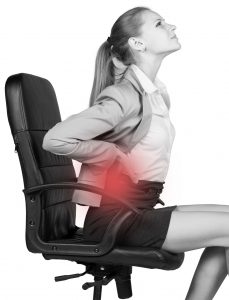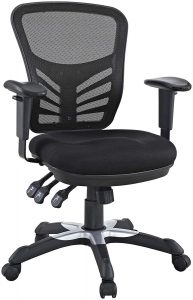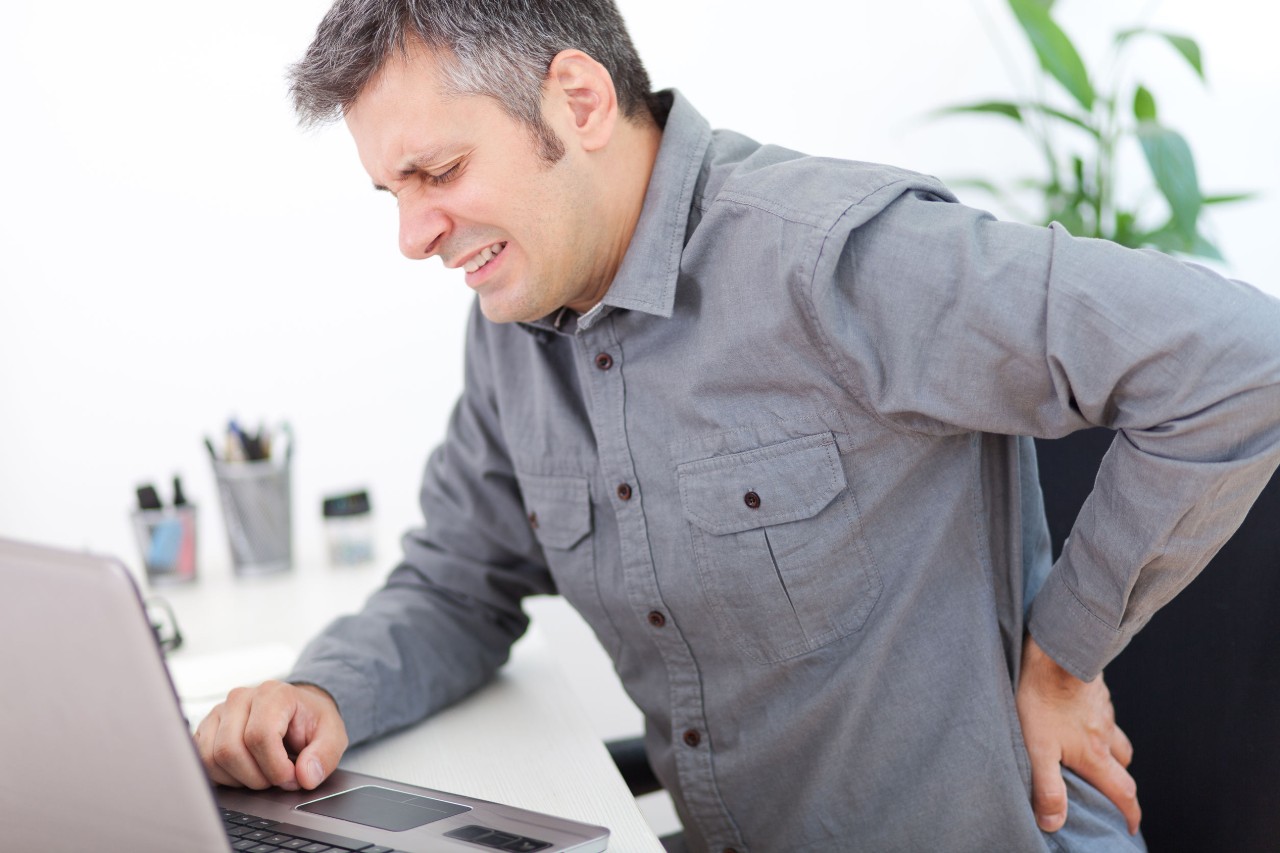We’ve all been there. You’re in the middle of getting dressed, reach for a shoe, and a shooting pain surges in your lower back.
That pain at the base of your spine is called lumbar backache, or lower back pain. We can all agree that it’s one of the more unpleasant parts of the human experience.
It only gets worse with the sedentary lifestyles most of us lead these days. Office workers are at particular risk of suffering from lower back pain. Fortunately, some employers recognize the potential costs of chronic pain in terms of productivity, work quality, and engagement. They’ve invested in several measures involving free chair massages and work break software.
Exercise can also make a massive difference in lumbar backaches, but finding the time and space to do it in the office is impossible for some.
Nevertheless, with some creativity, specific exercises can be done with ease from any office. In this article, we’ll go over the specifics of lower back pain. We’ll also review how offices exacerbate it and explore the exercises you can do in the office to prevent and reduce pain.
Lower Back Pain: Muscles At Play

Lower back pain can be transient. It comes and goes, which makes those affected suspect it isn’t real or worth addressing, but low back pain is no joke. There are real issues at play that have a severe impact on our daily lives and wellbeing.
The lower back extends over the five lumbar vertebrae, L1-L5. These vertebrae support most of the weight of the body, separated by discs that cushion bone-on-bone grinding. Ligaments hold the vertebrae in place, and tendons surround them, connecting the muscles that bind them all together.
These muscles are referred to as the core muscles and include the transverse abdominis (located on each side of the belly button, the internal and external obliques, the rectus abdominis (a.k.a. the 6-pack muscles) and multifidus and erector spinae (located along the length of your spine).
With 31 major nerves in the area, lower back pain, caused by a strain, sprain, compressed discs, and such, can be excruciating.
OTC medication can help, but it’s not a long term solution. That’s why working on your core muscles is a crucial strategy when dealing with lower back pain.
Sadly, modern life gives us scarce opportunities to exercise our core muscles, particularly if you work in an office. Office workers face a series of increased health risks, including lower back pain.
Office Space vs. Your Back

If you’ve spent any time in an office setting, you know they can be a nightmare for your back. Cramped cubicles, sitting for hours at a desk, and hunching over screens can wreck your lower back.
There are many ways you can try to make your office life less strenuous on your lumbar region. You can seek more ergonomic furniture and work on improving your posture. Proper alignment between your eyes and the screen is essential as well.
Even with an ergonomic chair, sitting for too long is terrible for your back. Taking regular breaks to walk around and stretch your legs is crucial.
Other people opt for a standing desk to combat sedentarism. If you’re considering a standing desk, or if your work has you on your feet all day, think about your footwear. The right shoes could make a world of difference to your posture and your health.
Office ergonomics is often a cultural issue. Creating awareness around the office about ergonomics and proper posture can help foster a cultural change in your workplace.
3 Office Exercises for Lower Back Pain
Even with the most ergonomic chair and desk in the world, lower back pain is a fitness game. The better-prepared your body is, the least likely you’ll have to deal with lumbar backaches.
Here are some of the best office exercises you can use to strengthen your core while sitting in your chair.
Office Exercises For Lower Back Pain #1: Seated Leg Pull-Ins
Sit at the edge of your chair, legs closed and bent at the knee, feet flat on the floor. Straighten your back and relax your shoulders.
Lean back in your chair at a 45-degree angle. While leaning back, hold the seat at either side of your body, at thigh height.
Still leaning back, use your abs to slowly draw your knees to your chest.
When your knees are at your chest, slowly unbend them. Stretch out your legs at a 45-degree angle in front of you and hold for a second.
Bend your knees again and slowly draw your legs back in. Repeat 20 times per set, and try to do a few sets every day.
Office Exercises For Lower Back Pain #2: Seated Lower Back Rotational Stretches
Sit on a chair or stool with your legs closed and bent at the knee. Keep your feet flat on the floor, and your back straightened.
Place your left hand on your right knee for support.
Twist your core to the right, at a slow, steady pace.
Use your left hand to help you keep the position and stretch it further.
Hold the position for 10 seconds.
Twist your core back to center, at the same steady pace you used before.
Now, do the same for the right side (right hand on left knee, twist to the left).
Hold for 10 seconds, twist back to the center.
Repeat 3-5 times per set. Try to complete at least two sets a day.
Office Exercises For Lower Back Pain #3: Seated Forward Bend
Sit on your chair, legs closed, knees bent, feet flat on the floor. Straighten your back and relax the shoulders.
Take a deep breath while you raise your arms above your head. Slowly exhale as you bend your body forward at the waist.
Keep going, moving your chest downwards until your torso is at your thighs. Reach for the floor with your hands. Let your arms hang from your shoulders.
Take another deep breath. As you exhale, let your torso sink into your thighs completely.
Relax your neck, letting it drop from the shoulders down to between your knees. Don’t spread your legs, though.
Hold the position. Breathe in deeply, but without pushing yourself, and exhale slowly. Repeat for 10 breaths.
Go back to the initial position. Repeat the exercise 2 to 3 times per day.
Conclusion
Let’s review what we’ve learned. Hopefully, by now, you understand lower back pain is a real health issue. It impacts your quality of life and is tied to sedentary lifestyles and office work.
Changing your habits around the office, taking breaks for walking around or using a standing desk can help. Remember that strengthening your core muscles with office-friendly exercises is the only way to keep lower back pain away for good.
Bonus Stretch for Eliminating Low Back Pain
Reduce Back Pain with This Hip Flexor Stretch


